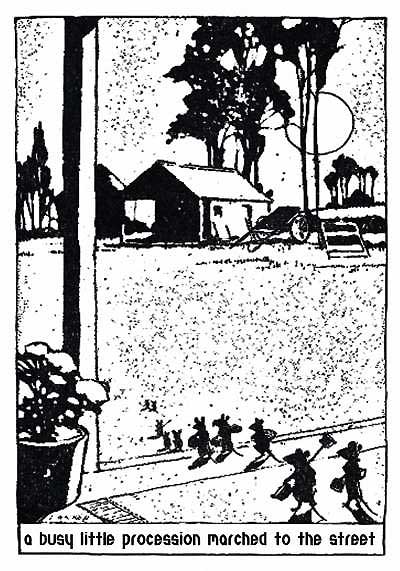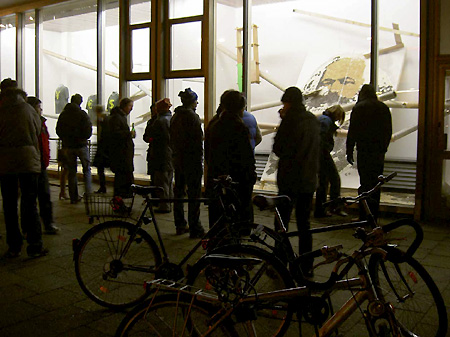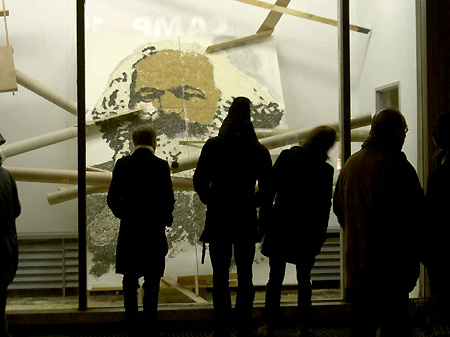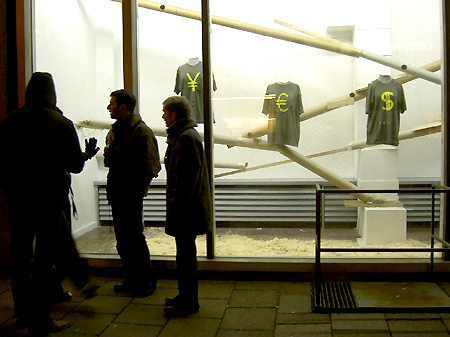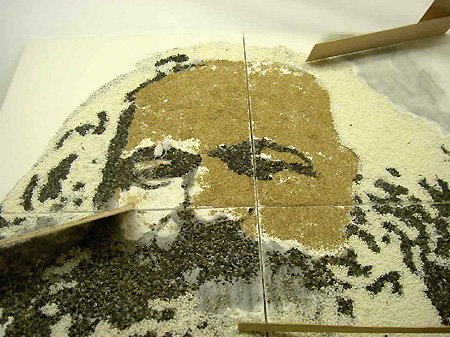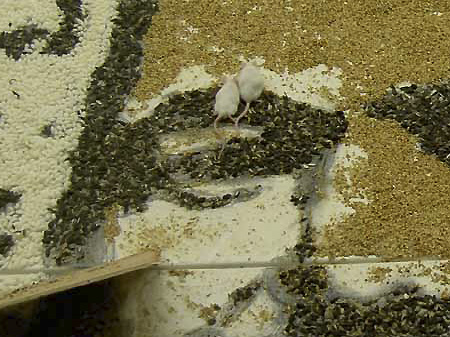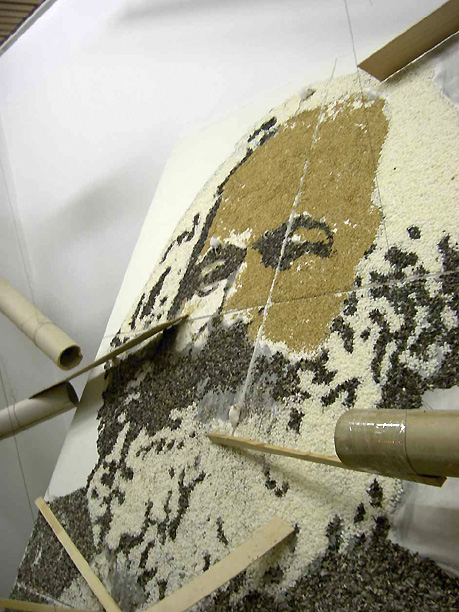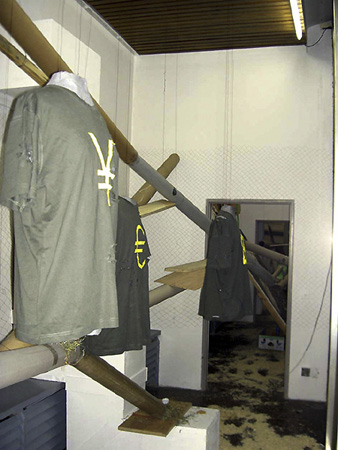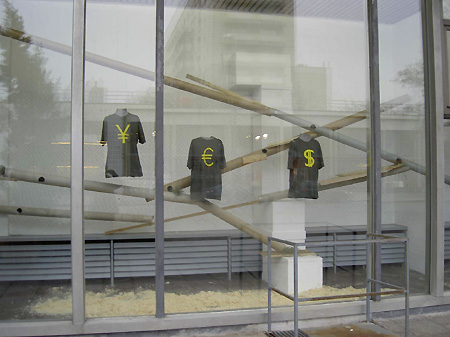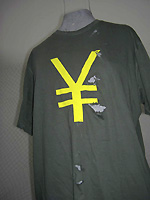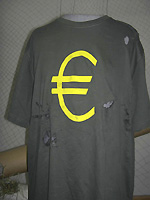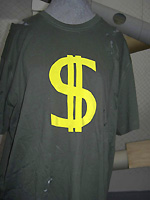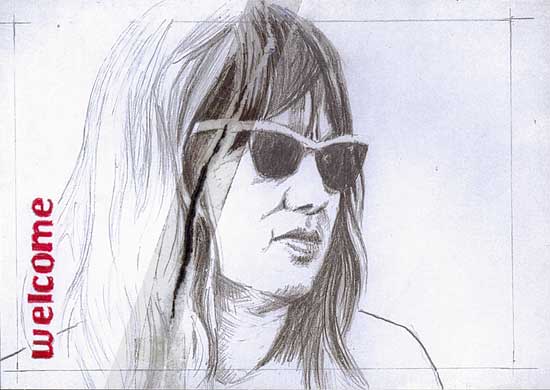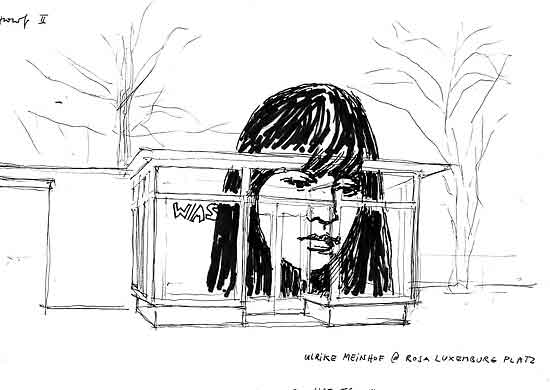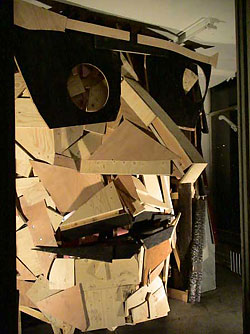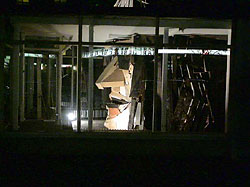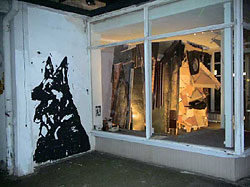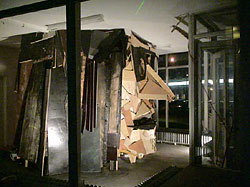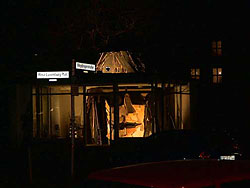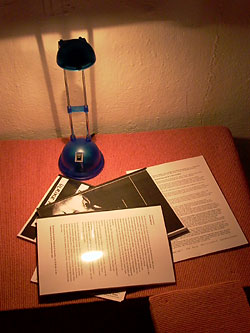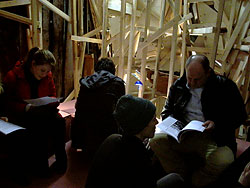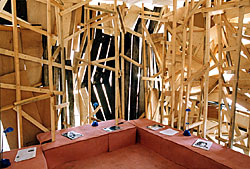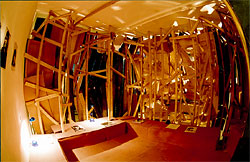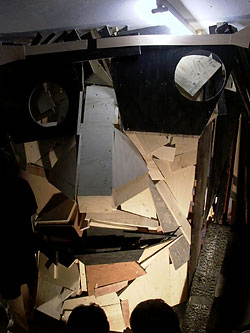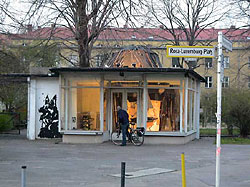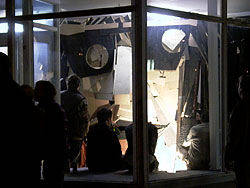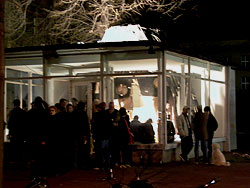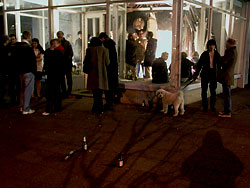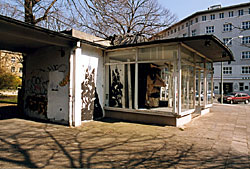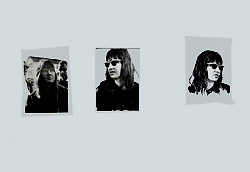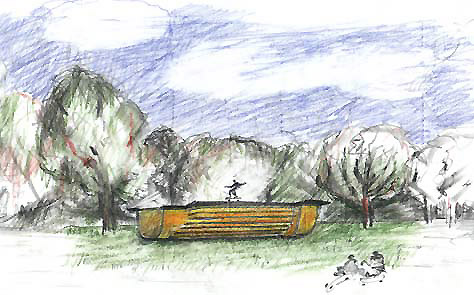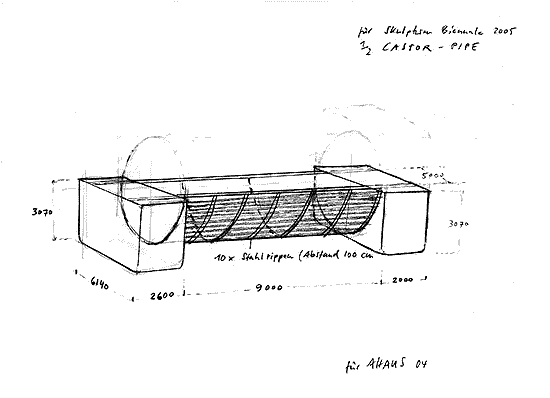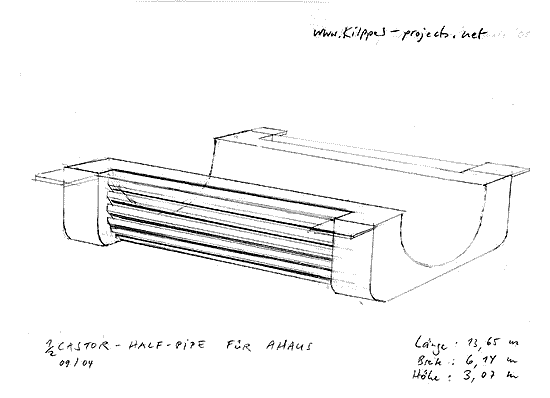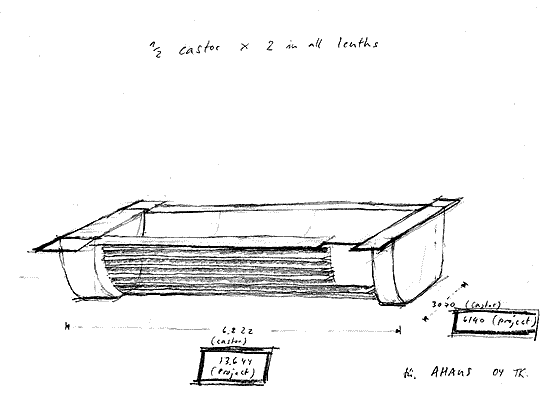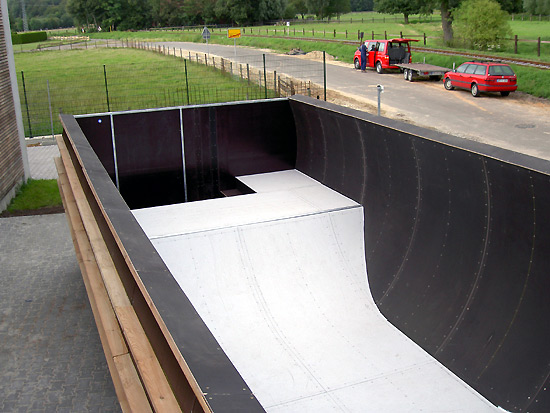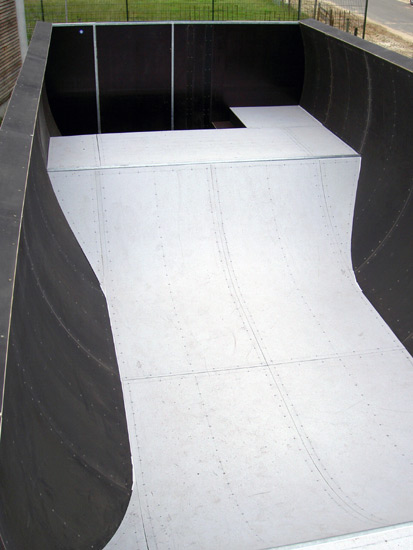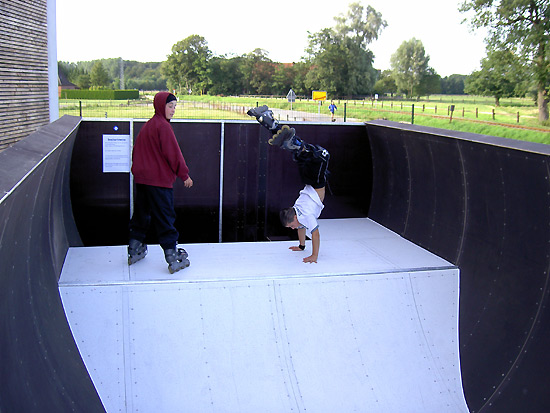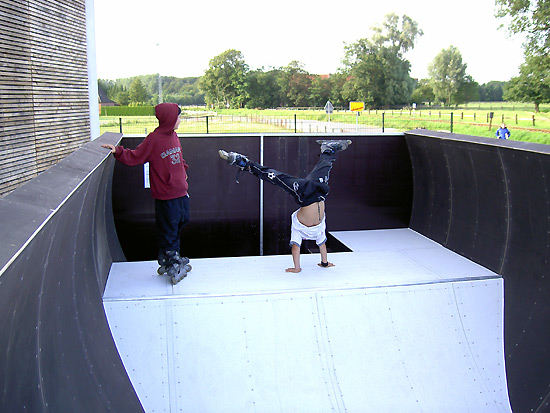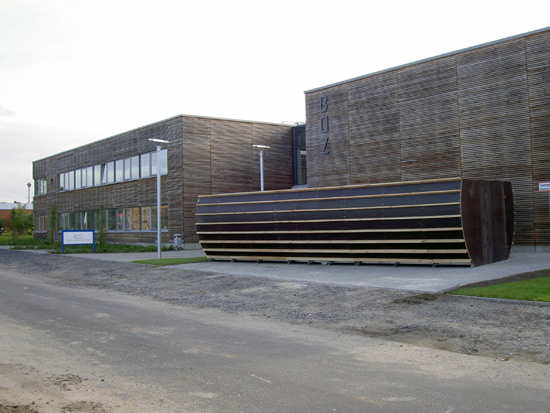June 20 – July 26, 2009
Thomas Kilpper
State of Control
June 20–July 26, 2009
Opening: Friday, June 19
7 pm, former GDR Ministry for State Security (MfS),
Normannenstr. 19, 10365 Berlin-Lichtenberg
Speakers include: Marius Babias (director n.b.k.), Dr. Eugen Blume (director Hamburger Bahnhof)
from 10 pm Basso-Bar
6-9 pm, n.b.k., Chausseestraße 128/129, 10115 Berlin-Mitte
Twenty years after the fall of the Berlin Wall, Neuer Berliner Kunstverein is realizing a project with artist Thomas Kilpper at the former GDR Ministry for State Security (MfS), which is being made accessible to the public for the first time. Additional works by the artist will be shown at the same time in the spaces at Neuer Berliner Kunstverein.
In his floor cuttings, Berlin artist Thomas Kilpper, born in Stuttgart, engages with German history. His large-scale intervention on 1,600 square meters offers a historical retrospective on various state concepts of surveillance and repression, from the Nazi period to the digital present. The divided history of Germany that can be read in this building and in the cut motifs and imprints in the floor is also one of resistance against systems of injustice. In this work, Klipper chronicles the history of both German states and the events from 1989/90 until today.
Curated by Marius Babias
Book Series n.b.k. Exhibitions
As part of the book series n.b.k. Exhibitions, a catalog will be published by Verlag der Buchhandlung Walther König, Cologne, including a preface by Marius Babias and an interview with Clemens Krümmel, 144 pages with color illustrations, German/English.
Locations
Former GDR Ministry for State Security (MfS),
Normannenstr. 19, 10365 Berlin-Lichtenberg
(near Research Center and Memorial Site Normannenstraße, so-called Stasi-Museum)
Thursday – Sunday 11 am – 7pm
Neuer Berliner Kunstverein,
Chausseestraße 128/129, 10115 Berlin-Mitte
Tuesday – Sunday 12 am – 6 pm
Thursday 12 am – 8 pm
Program
Thursday, June 25, 2009, n.b.k. (Chausseestraße 128/129)
7 pm Artist talk with Thomas Kilpper (artist) and Marius Babias (curator)
Thursday, July 09, 2009, former MfS (Normannenstraße 19)
8 pm Concert Erste Stufe Haifisch (GER) / Victim (GB)
Thursday, July 16, 2009, former MfS (Normannenstraße 19)
5 pm Guided tour Research Center and Memorial Site Normannenstraße (so-called Stasi-Museum) and exhibiton walk together with Thomas Kilpper (artist) und Sophie Goltz (Communication / Education n.b.k.)
Saturday, July 18, 2009, n.b.k. (Chausseestraße 128/129)
8 pm Concert Arnold Dreyblatt Ensemble
Supported by


Supported by :
Galerie Christian Nagel (Berlin/Cologne)
Patrick Heide Contemporary Art (London)



More Exhibitions:
Thomas Kilpper – State of Control
June 22 – July 18, 2009
Thursday – Saturday 1-6 pm
Opening brunch
Sonday, June 21, 2009, 11 am
Galerie Olaf Stüber
Max-Beer-Str. 25 | D-10119 Berlin |
T +49 (0)30. 28 38 63-12
mail@galerieolafstueber.de | www.galerieolafstueber.de








































































